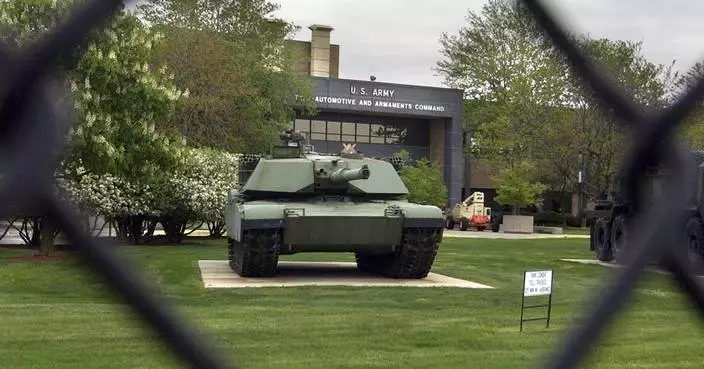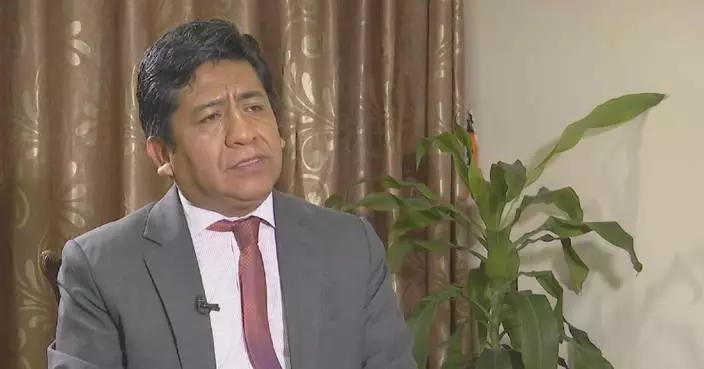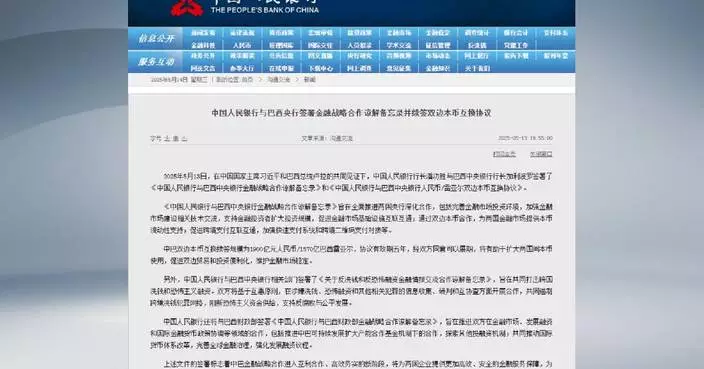WASHINGTON (AP) — President Donald Trump has begun making one of the controversial personnel changes for government employees that was spelled out in the conservative Project 2025 blueprint for his second term.
He's starting the process of reclassifying 50,000 federal employees under what's known as Schedule F, which can make civil servants into political appointees or other at-will workers, who are more easily dismissed from their jobs. That means they'll have less civil service protection.
Remaking the federal workforce is part of a larger Trump administration push to dramatically shrink the size of government and exert more control over it.
The proposal follows an executive order Trump signed shortly after retaking the presidency, and was being published in the Federal Register. Trump announced the latest move online.
“If these government workers refuse to advance the policy interests of the President, or are engaging in corrupt behavior, they should no longer have a job,” he wrote on his social media site. “This is common sense, and will allow the federal government to finally be ‘run like a business.’”
Everett Kelley, president of the American Federation of Government Employees, said the move could ultimately undermine the federal government’s effectiveness.
“President Trump’s action to politicize the work of tens of thousands of career federal employees will erode the government’s merit-based hiring system and undermine the professional civil service that Americans rely on,” he said in a statement.
Administration officials argue that it’s necessary to increase accountability in the governmental workforce. The change is expected to make it easier to replace career employees who have “important policy-determining, policy-making, policy-advocating, or confidential duties,” according to a White House fact sheet.
The fact sheet said the plan “empowers federal agencies to swiftly remove employees in policy-influencing roles for poor performance, misconduct, corruption, or subversion of presidential directives, without lengthy procedural hurdles.”
Once the rule is finalized, the president plans to sign another executive order to conclude the process.
The Office of Personnel Management said the change “aims to strengthen accountability among career federal employees while streamlining removals for misconduct or poor performance.”
“Policy-making federal employees have a tremendous amount of influence over our laws and our lives,” the agency’s acting director, Chuck Ezell, said in a statement. “Such employees must be held to the highest standards of conduct. Americans deserve a government that is both effective and accountable.”
It's the latest step in Trump's battle against what he describes as “the deep state,” which frustrated his goals in his first term. Now he's moving more swiftly to fire people and reshape the government bureaucracy — steps that have alarmed labor unions, good-government advocates and political opponents, who worry about him consolidating power and violating worker rights.
Bringing back Schedule F was a key component of Project 2025, which was led by the Heritage Foundation think tank and fueled by former Trump administration officials. It was a nearly 1,000-page handbook designed to commandeer, reshape and do away with what Republicans deride as a bureaucracy opposed to Trump's key governing goals.
A key part of that plan was firing as many as 50,000 federal workers and replacing them with conservatives ideologically aligned with Trump and eager to ensure his approach to governing comes to fruition.
Kevin Owen, a lawyer who represents federal employees, further warned that reclassified workers would lose whistleblower rights.
“It’s going to have a complete chilling effect,” Owen said.
During his first term, Trump issued a Schedule F order in 2020 that sought to reclassify tens of thousands of federal employees. President Joe Biden issued his own order upon taking office that nullified Trump's original action.
Then, last year, the Office of Personnel Management — which acts as the government's human resources arm — issued a new rule designed to make it harder to reclassify and dismiss thousands of federal employees in an attempt to essentially “Trump-proof” career positions.
The Biden-era rule barred career civil servants from being reclassified as political appointees or as other at-will workers.
Advocates said at the time that the rule would slow Trump's ability to reinstate Schedule F should he win the 2024 election. But Trump signed another executive order on Inauguration Day in January reinstating his 2020 order — and clearing the way for Friday's action.
OPM said newly reclassified roles “will remain career positions filled on a nonpartisan, merit basis but will be classified as at-will positions." It said that will exempt them "from the standard, often burdensome adverse action and appeals procedures that currently make it difficult to address poor performance or misconduct.”
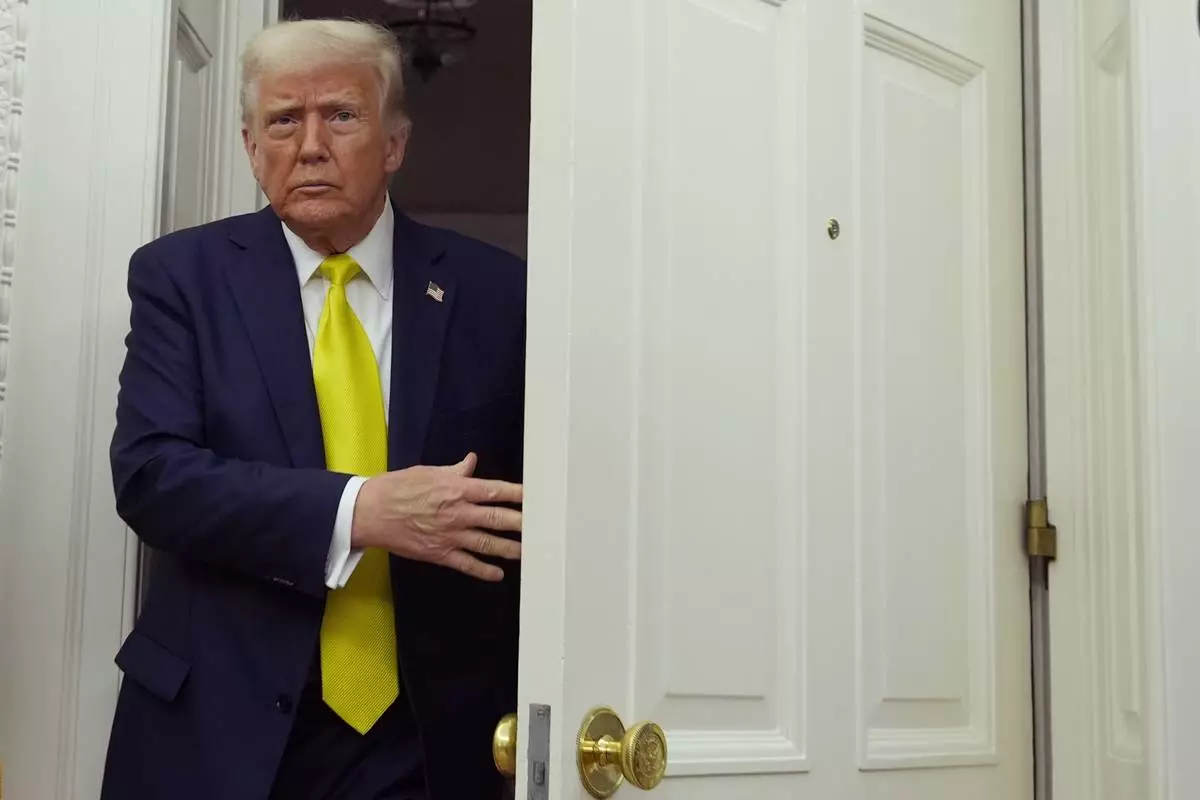
President Donald Trump arrives at a swearing in ceremony for Dr. Mehmet Oz to be Administrator of the Centers for Medicare and Medicaid Services, in the Oval Office of the White House, Friday, April 18, 2025, in Washington. (AP Photo/Alex Brandon)
A choppy day of trading on Wall Street ended with a mixed finish for stock indexes Wednesday, as gains by several big technology stocks helped temper losses.
The S&P 500 edged up 0.1% after wavering between small gains and losses much of the day. Most of the stocks in the index lost ground, but solid gains for several heavyweight technology companies like Nvidia helped counter a decline in health care and other sectors.
The Dow Jones Industrial Average slipped 0.2%, while the Nasdaq composite rose 0.7%.
Super Micro Computer surged 15.7% after signing a partnership agreement with Saudi Arabian data center company DataVolt. Advanced Micro Devices gained 4.7% after announcing a $6 billion stock buyback program.
Nvidia rose 4.2% and Google parent Alphabet added 3.7%.
Other big gainers included eToro Group, a retail trading platform for stocks and cryptocurrency. It rose 28.8% in its first day of trading.
The market has been relatively steady since its surge on Monday, which came after the U.S. and China entered a 90-day pause in their trade war. The market gained some more ground on Tuesday after the government reported that inflation unexpectedly cooled across the country in April. Additional updates on inflation and retail sales are expected on Thursday.
The benchmark S&P 500 index, which sits at the center many 401(k) accounts, has erased all its losses since President Donald Trump escalated his global trade war in early April. It has now also erased its losses for the year and is back to within 4.1% of its all-time high set in February.
“The stock market’s rally has legs, as the trade negotiation with China was seemingly the toughest one on the docket," said Rick Gardner, chief investment officer at RGA Investments.
Trump has delayed a large swath of his most severe tariffs against America's trading partners, but some import taxes remain in place. Uncertainty over the path ahead continues to hang over businesses and consumers. The on-again-off-again nature of Trump’s trade policy has left companies reluctant to make plans about investment and hiring and consumers nervous about spending.
Businesses continue to trim or withdraw their financial forecasts as they face unpredictable trade policy and cautious consumers.
American Eagle fell 6.4% after the retailer withdrew its financial outlook for the year citing “macro uncertainty.” General Motors, UPS, Kraft Heinz and JetBlue are among the many companies representing a wide range of industries that have warned about the impact of tariffs and a weakening economy.
More than 90% of companies in the S&P 500 have reported earnings for their latest quarter. The majority of companies have reported better-than-expected earnings, but forecasts for earnings growth during the current quarter have been broadly cut in half for companies in the index.
The economy has already showed signs of slowing. It shrank 0.3% during the first quarter amid a surge of imports as businesses and consumers tried to stock up amid tariffs and policy uncertainty.
Inflation remains a big concern. The latest data on consumer prices released Tuesday showed that tariffs haven’t had much impact yet. But that could change as the impact of current tariffs make their way through supply chains and delayed tariffs potentially go into effect. Inflation has cooled to just above the Federal Reserve's target of 2%, but the threat of higher prices on goods because of import taxes has heightened worries about inflation heating up.
The U.S. on Thursday will release its April report for inflation at the wholesale level, which is what companies are paying for goods. Economists expect an easing of inflation there.
The latest update Thursday for retail sales is expected to reflect a sharp drop to 0.2% in April from 1.4% the previous month.
Retail giant Walmart will also report its latest financial results on Thursday and its financial forecasts will be closely watched.
In the bond market, Treasury yields edged higher. The yield on the 10-year Treasury rose to 4.54% from 4.47% late Tuesday. The two-year Treasury yield, which moves more closely with expectations for Fed action, rose to 4.06% from 4.00% late Tuesday.
All told, the S&P 500 rose 6.03 points to 5,892.58. The Dow fell 89.37 points to 42,051.06, and the Nasdaq gained 136.72 points to 19,146.81.
In stock markets abroad, indexes rose in Asia and were mixed in Europe.
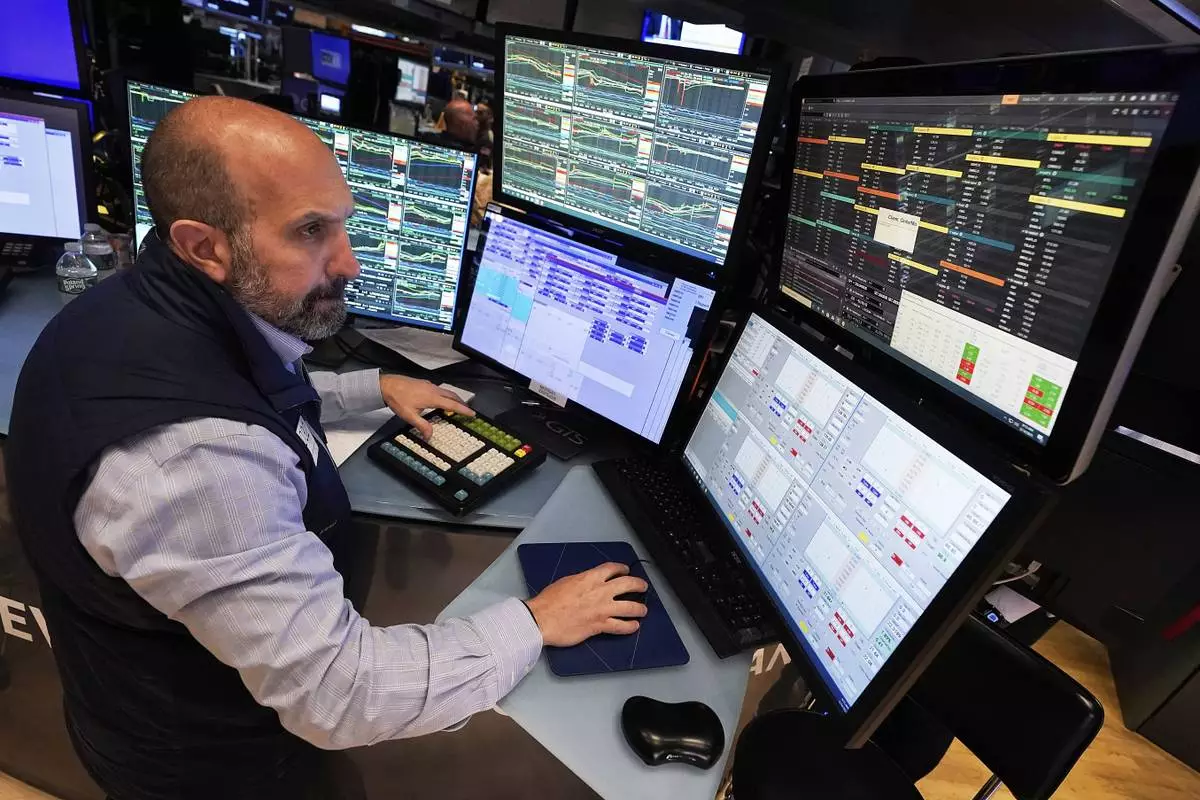
Specialist James Denaro works at his post on the floor of the New York Stock Exchange, Wednesday, May 14, 2025. (AP Photo/Richard Drew)

Specialist John McNierney, left, and trader Anthony Carannante work on the floor of the New York Stock Exchange, Wednesday, May 14, 2025. (AP Photo/Richard Drew)
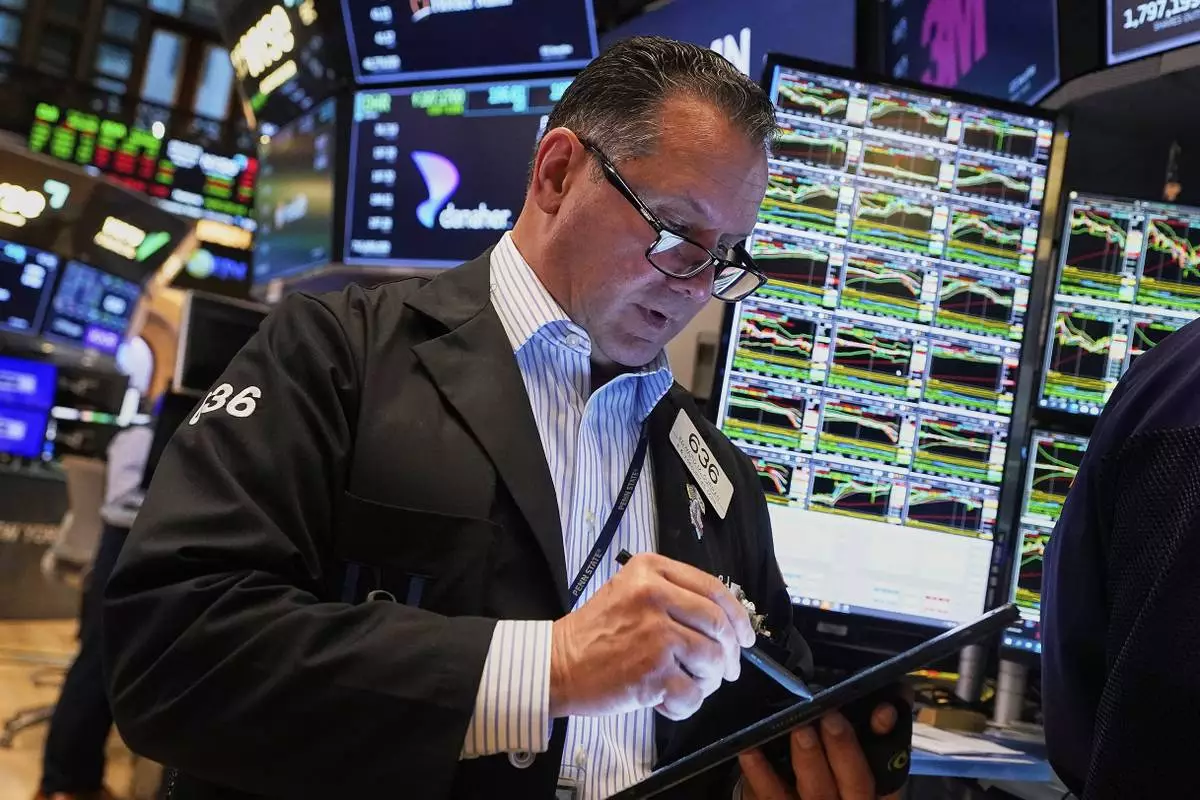
Trader Edward Curran works on the floor of the New York Stock Exchange, Wednesday, May 14, 2025. (AP Photo/Richard Drew)

Options trader Chris Dattollo works on the floor of the New York Stock Exchange, Monday, May 12, 2025. (AP Photo/Richard Drew)

Options trader Chris Dattollo, right, works on the floor of the New York Stock Exchange, Monday, May 12, 2025. (AP Photo/Richard Drew)
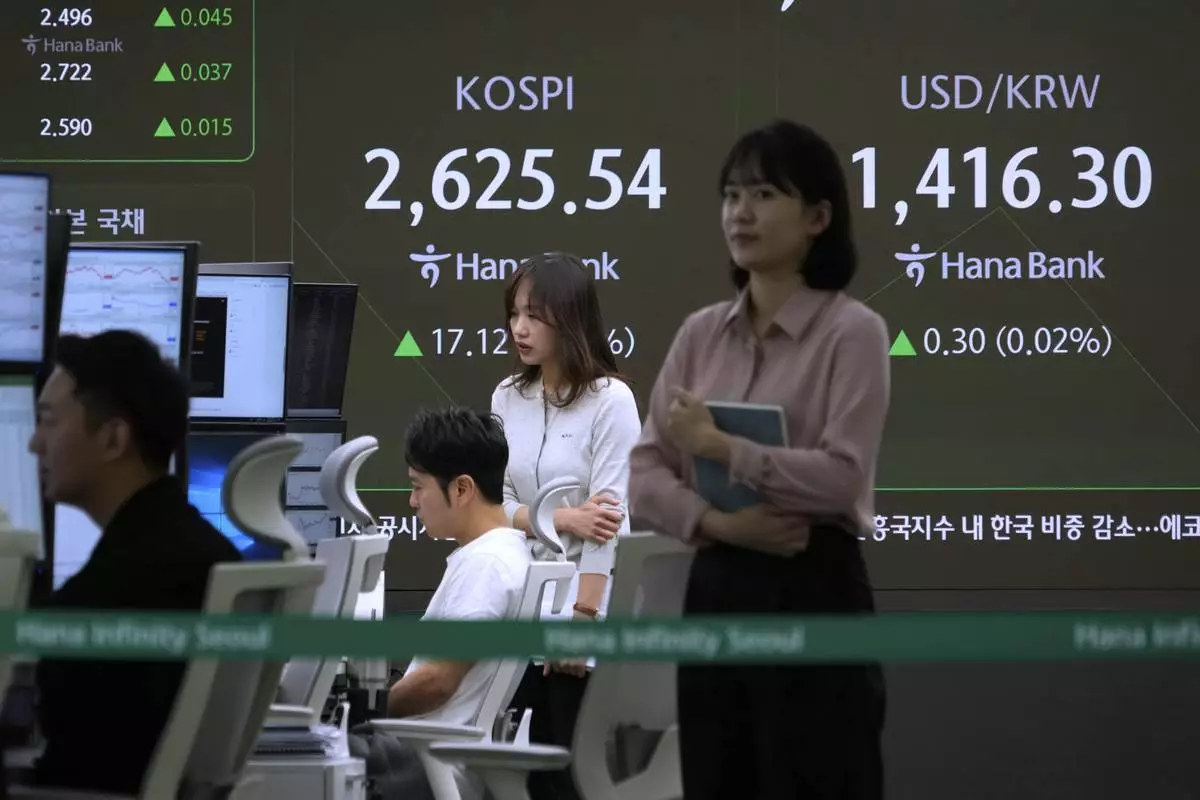
Currency traders work near a screen showing the Korea Composite Stock Price Index (KOSPI) and the foreign exchange rate between U.S. dollar and South Korean won, right, at the foreign exchange dealing room of the KEB Hana Bank headquarters in Seoul, South Korea, Wednesday, May 14, 2025. (AP Photo/Ahn Young-joon)
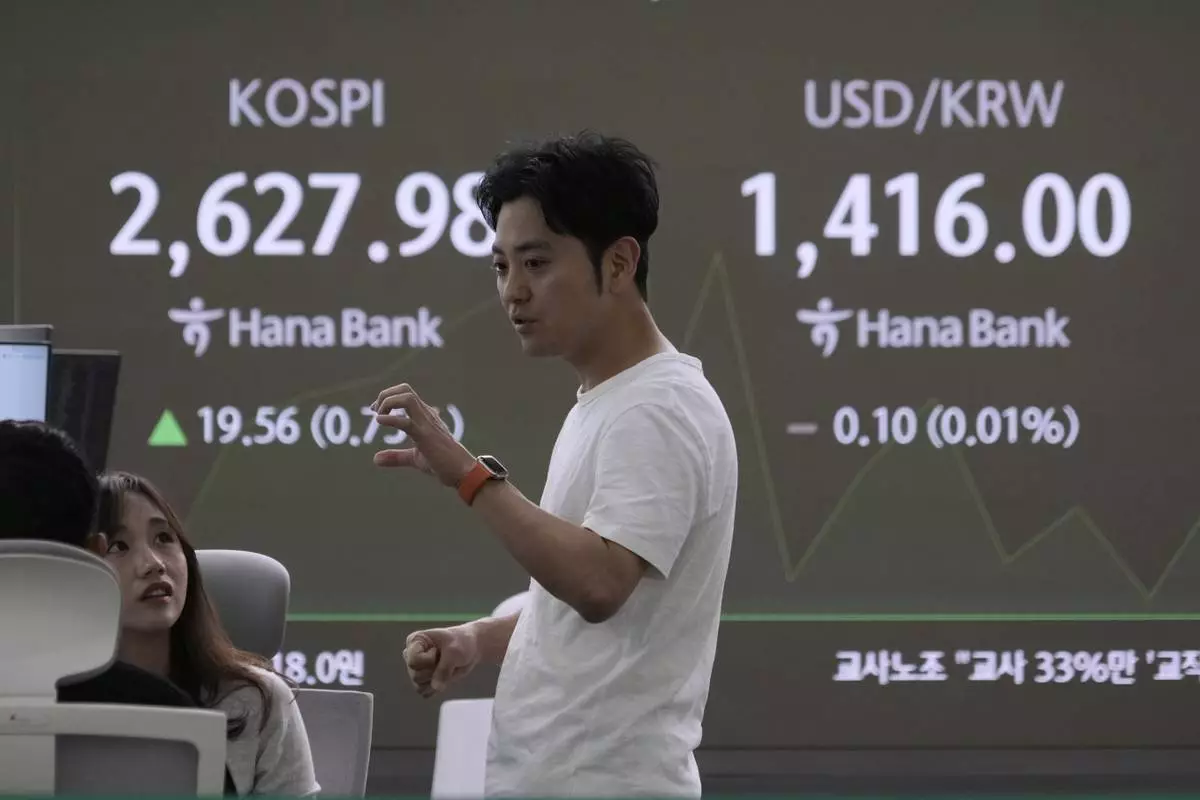
Currency traders work near a screen showing the Korea Composite Stock Price Index (KOSPI), left, and the foreign exchange rate between U.S. dollar and South Korean won at the foreign exchange dealing room of the KEB Hana Bank headquarters in Seoul, South Korea, Wednesday, May 14, 2025. (AP Photo/Ahn Young-joon)
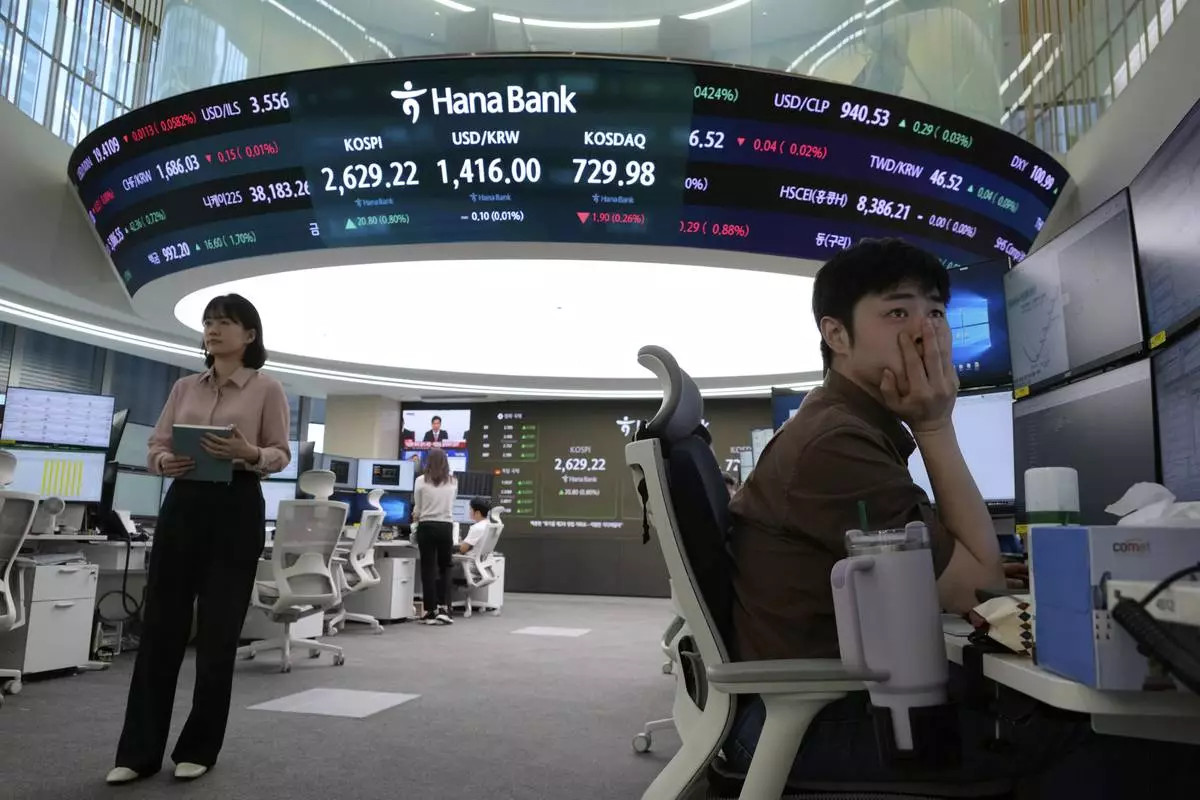
A currency trader watches monitors near a screen showing the Korea Composite Stock Price Index (KOSPI), top center left, and the foreign exchange rate between U.S. dollar and South Korean won, top center, at the foreign exchange dealing room of the KEB Hana Bank headquarters in Seoul, South Korea, Wednesday, May 14, 2025. (AP Photo/Ahn Young-joon)















